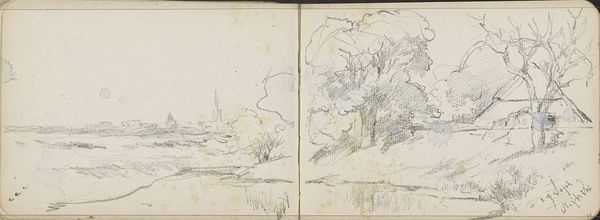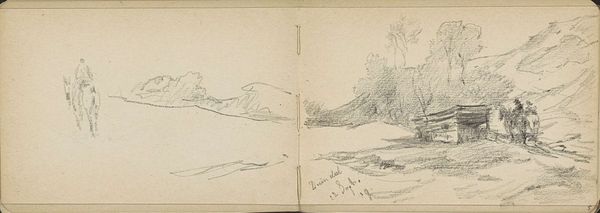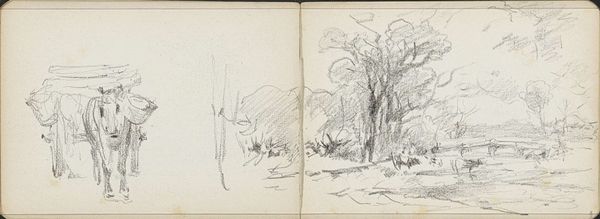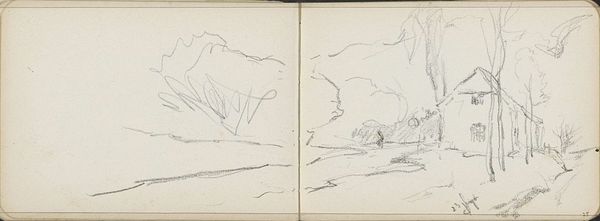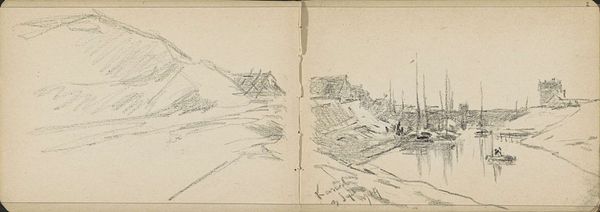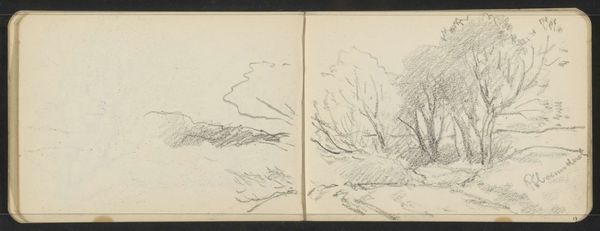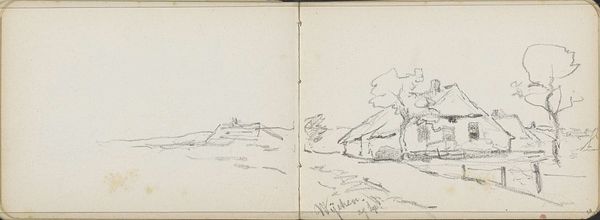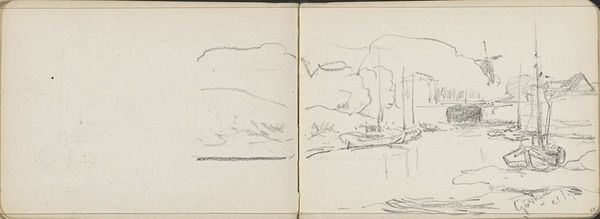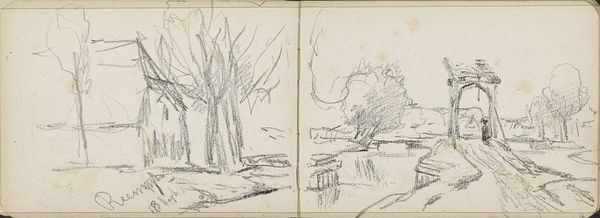
drawing, pencil
#
drawing
#
quirky sketch
#
pen sketch
#
landscape
#
personal sketchbook
#
idea generation sketch
#
sketchwork
#
ink drawing experimentation
#
pen-ink sketch
#
pencil
#
sketchbook drawing
#
sketchbook art
#
realism
#
initial sketch
Copyright: Rijks Museum: Open Domain
Curator: Here we have Willem Cornelis Rip’s drawing, “Kar op een dorpsstraat te Huisseling,” possibly made sometime between 1866 and 1929. It’s a humble sketch done with pencil and pen. What catches your eye first? Editor: It feels ephemeral, almost dreamlike. The soft pencil lines and minimal detail give it a sense of transience, as if the scene is about to dissolve. There's also something very exposed about the labor; you see the artist making a scene. Curator: Precisely! Look at the materials—pencil and ink—cheap, portable. He likely wasn’t trying to produce a finished masterpiece here. More likely, Rip sought to capture the fleeting essence of this village scene—note the swift, sure lines sketching the figures. It hints at the accessibility of artmaking when divorced from the expensive apparatus of "high art." Editor: Absolutely, but it makes me think about class and industry, too. This is likely not art for the peasants *in* Huisseling. We have a commodified product based on what is effectively the visual labor of the working people. And the drawing tools here are indicative of industrial-age production. The materials are cheap, yes, but that is the cheapness of manufacture—availability for *some.* Curator: That's a potent reading. It's curious how he jots down 'Huisseling' at the bottom—almost like he is anchoring this airy image to a very real, physical place. I love how such modest materials can still evoke such strong emotions, capturing a sense of place with just a few lines. It almost reads like a memory fading at the edges. Editor: And the sketch's roughness gives it a stark honesty. It’s all there: the materiality, labor, the site-specificity, all distilled through the artist's own social positionality into an intimate, and somewhat melancholic, piece. The quick, economic marks and easily sourced paper underscore how the sketch exists between fine art, craft, and commercial industry. It really encapsulates artmaking in a world that was undergoing massive production and societal change. Curator: Beautifully put. A fleeting glimpse of a world transforming before our eyes. Editor: A world recorded and produced, though perhaps never *truly* seen, with a mass produced tool.
Comments
No comments
Be the first to comment and join the conversation on the ultimate creative platform.


